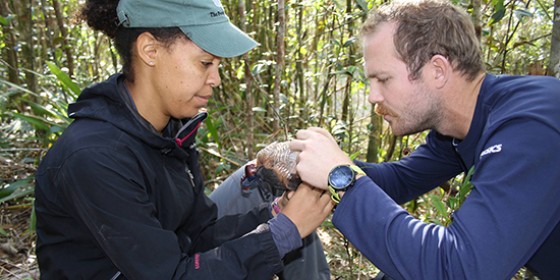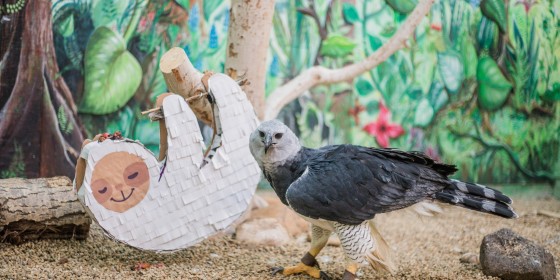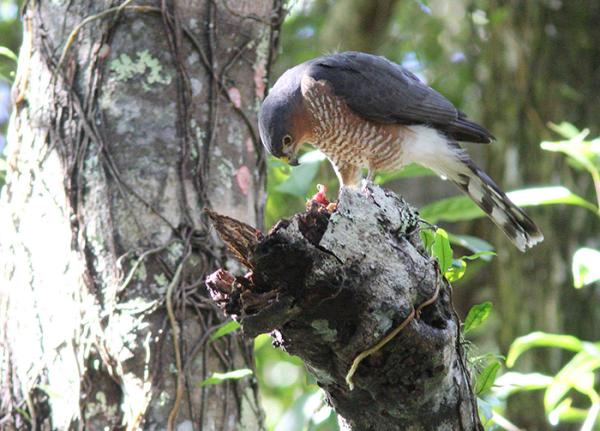Even before Hurricanes Irma and Maria, the entire recorded population of Puerto Rican Sharp-shinned Hawks was just 75 individuals in the 2017 breeding season. We feared the worst after the hurricanes in September, wondering if any bird could survive sustained winds of 155 mph.
Puerto Rican Sharp-shinned Hawks don’t migrate, nor are they found anywhere beyond their island stronghold, in habitat depleted by human land use. The hawks depend entirely on the dense mountain forests of this Caribbean island for nesting and hunting. Like Sharp-shinned Hawks on the American mainland, they are agile fliers, but they’re smaller and have brighter plumage.
Threats to Puerto Rican Sharp-shinned Hawks

Russell Thorstrom

Amanda Hancock
Hurricane Maria decimated the forests, actually stripping the leaves off the relatively few trees left standing. The majority of mature trees were blown down, uprooted, or snapped off, leaving only palm trees and tree ferns. Without foliage, nestlings don’t have shelter from heat, rain, or predators. Given the scale of devastation in Puerto Rico, we estimate full recovery of the forest could take up to 20 years.
Even adult birds are subject to starvation because their main prey—small birds like tanagers, warblers, and vireos—also depend on adequate forest habitat. With such difficult conditions, our first act was to provide supplemental food so the remaining Sharp-shinned Hawks could become healthy enough to breed.
As eggs appeared in the last two spring seasons, we carefully moved some into incubators to hatch in a secure, climate-controlled breeding facility on the island. Since these hawks normally produce a second set of eggs if the first set is lost, we are able to raise chicks in the safety of our facility without compromising the wild parents’ success. In our first year of captive-rearing, we raised and released six young as the wild pairs raised only two.
Few organizations have the expertise or resources to respond to an emergency of this scope, but The Peregrine Fund has returned numerous raptor species from the brink. We expect to learn a great deal in Puerto Rico and have already achieved a new milestone with our first-ever release of an Accipiter. This rescue operation will hone our skills for a future of extreme weather and ever more threatened island species.







